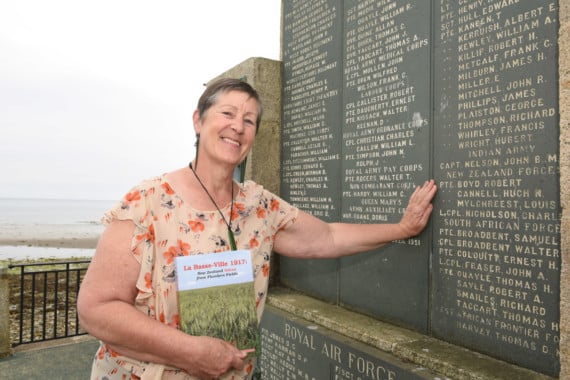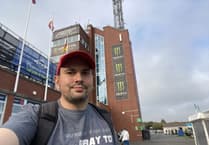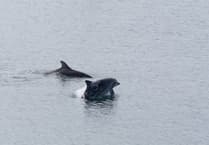What a shock it was seeing a woman at Tynwald Day wearing a Maori feather cloak - called a Korowai - something that I had not seen since leaving New Zealand 10 years ago.
After chatting with this person, I found out that she had been living in New Zealand since 2004 and was invited to the national day as a guest because of her work which has an island connection.
Dominique, known as the Lady of Flanders Field, told me how she had uncovered a First World War battle in her neighbourhood La Basse-Ville, in Belgium, where more than 1,000 men who had travelled from New Zealand had been killed in action.
This included Manxman Robert Boyd who fought alongside the Kiwi men.
Although the battle was a significant one, it was also a forgotten one with many of the soldier’s details of their place of death being incorrectly labelled as ’France’ and not Belgium.
Dominique has made it her lifelong mission to dig up the past and tell the soldier’s descendants the truth of what had happened in Flanders Fields all those years ago.
’What I want to do is to give these families closure,’ she said while sitting in the comfortable surroundings of Noa Bakehouse in Douglas.
’I’ve seen over all these years that people had not processed what had happened 100 years ago because they didn’t know what had happened.’
Her journey initially began by following the story of one Maori man - Sergeant Charles Rangiwawahia Sciascia - a sergeant who had once been an All Blacks player and the son of a Maori mother and an Italian father.
The spark of interest was lit after meeting a woman in a bookshop in Hawke’s Bay, New Zealand, who had asked where Dominique’s accent was from.
The woman, Barbara Grant who Dominique’s book La Basse-Ville 1917: New Zealand Voices from Flanders Fields is dedicated to, helped her to meet a great-niece of Charles.
His great-niece spoke about her father and said he was named after the battle in which his uncle Charles was killed five months before his birth.
Dominique said: ’He was called "La Basse" and at the time of his death in 1975 the family assumed it was La Bassée, which is a town in the north of France.’
This left her perplexed as she believed the name ’La Basse’ was incorrect and after some lengthy research she found that Charles’ body actually remained in La Basse-Ville in Belgium.
What really pulled her heart-strings was that Charles was killed at the age of 25, which was the same age as her eldest son at the time.
She said: ’At first I was just touched emotionally.’
Charles’ family were also touched by her interest and efforts to bring them information about their ancestor.
She said: ’His nephew told me "Dominique what you have done is put flesh on the bones of my uncle. You have to write a book".’
Deciding that it was the right thing to do she began the task.
’At first I thought it was going to be only the story about Charles, but then I realised that that was not fair,’ she said.
While digging further, she realised that her newfound mission was to tell all the stories of the 1,010 New Zealand men killed in the Flanders Fields battle.
’These boys they wanted their story to be told,’ she continued. ’That’s why I put the word "voices" there on the title of the book.
’They were a band of brothers and Charles was the first one or the leader of the band.
’Lots of mothers would have been crying and not knowing really what happened to their boys.
’What I did was adopt the soldiers and I thought "okay I have to do what I can because this is my country and I’m able to get information that those people [in New Zealand] wouldn’t be able to get".’
Dominique has since published more than 12 years of research about ’her men’ in her book.
She has been recognised for her work in New Zealand and Belgium and has often spoken at memorial services in both countries.
Coming to the Isle of Man, she is now looking to put together a more thorough story about Robert Boyd from Douglas.
According to newspaper articles he had ’worked in Debenham Limited in England and he was sent to NZ as a representative’ before deciding to enlist in the nation’s army when he was 35.
He was killed on August 2, 1917 at the age of 37.
During her visit to the island she has searched the archives at the Manx Museum and has found Robert’s name on a family gravestone in a Malew churchyard.
Dominique added: ’I’ve been realising, since I’ve arrived, that I’m still on a mission. From day one I’ve found things about him and then on Monday I found out some more. It’s evolving.
’Even if he’s on the cenotaph in Douglas and his name is written in the tomb of his parents he’s not here, but I had to bring him back and his spirit from Belgium. That’s why I want to see his family because I need to tell them what happened.’
Those who wish to find out more or contact Dominique with information about Robert Boyd can do so by emailing [email protected] or searching @labasseville1917 on Facebook.
She is also looking for a sponsor to sell her books in the island at £50 each.
’If you don’t learn from the history it will repeat itself so I’m trying to share my knowledge.
’It’s really important for today’s world. It’s not something from the past it’s still alive it lives in one way or another.’



.jpeg?width=209&height=140&crop=209:145,smart&quality=75)

Comments
This article has no comments yet. Be the first to leave a comment.